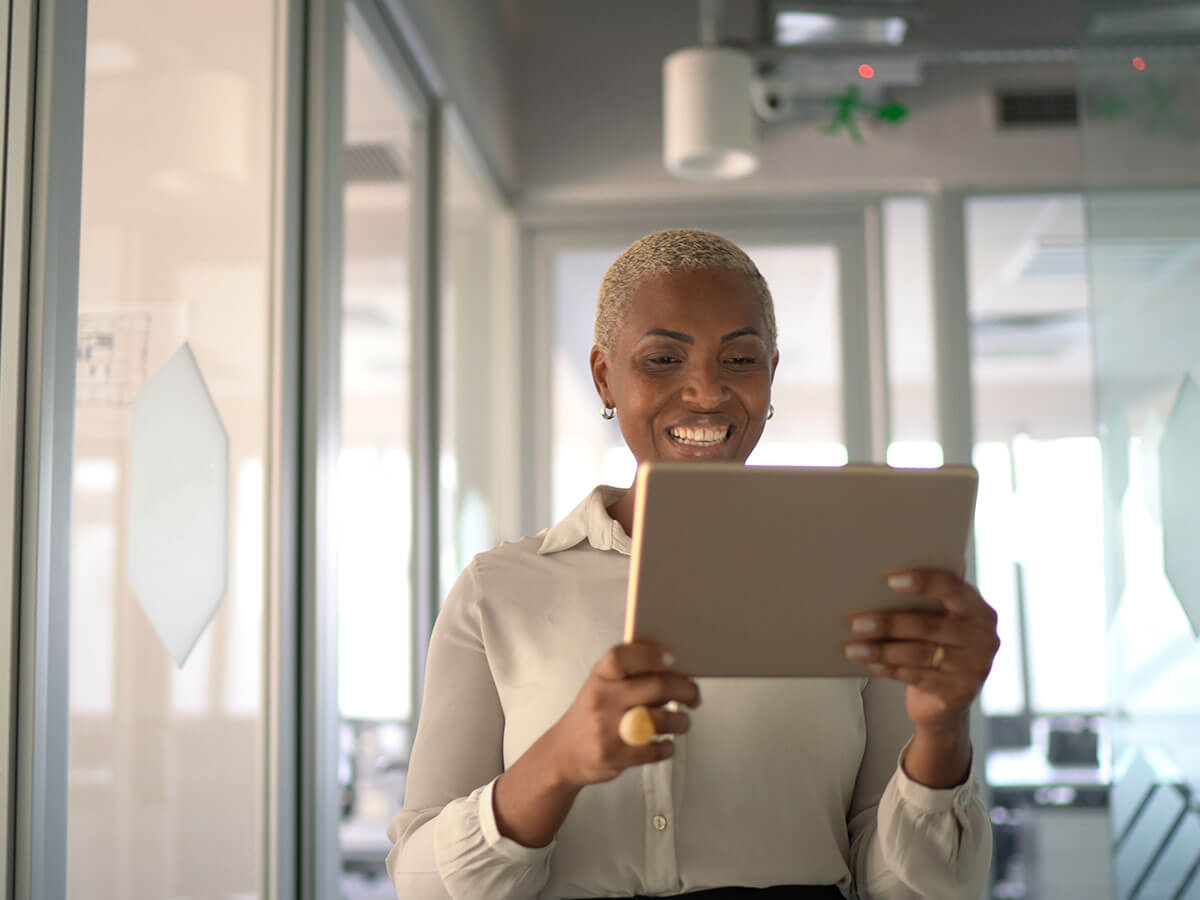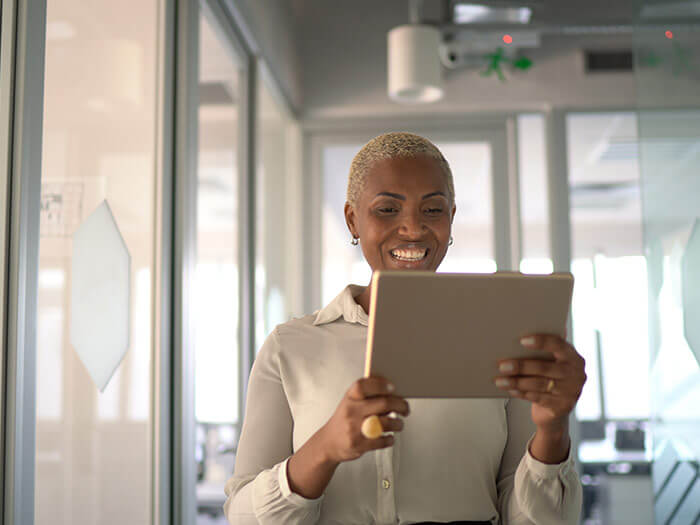
‘We’ve adapted, adjusted and benefited from a lot of lessons learned’
 While some CPAs miss seeing their clients in-person, others admit that the virtual approach also works well (Getty Images/FG Trade)
While some CPAs miss seeing their clients in-person, others admit that the virtual approach also works well (Getty Images/FG Trade)
Every day, we hear tales of how COVID-19 has upended people’s lives—from the way they work to the way they spend their free time. And it’s only natural that CPAs and the businesses they serve have been affected as well.
To get a better sense of the extent of that impact, we talked to CPAs in a variety of areas—from public practice to industry to public service and beyond.
Here are some of the main themes that emerged.
FROM ONSITE TO OFFSITE
As might be expected, the pandemic brought a rapid—and sometimes enduring—shift to remote work for many CPAs.
For example, CPA Hadia Amrane, treasurer and head of shared services at MHIRJ Aviation Group, a division of Mitsubishi Heavy Industries, says she has been working 100 per cent remotely since the pandemic began.
For other CPAs, however, the pandemic didn’t bring any real changes to work locations. For example, CPA Robert Gore of Robert Gore & Associates says the firm’s two offices are large enough to “effortlessly accommodate social distancing.” And, when given a choice whether to work from home, just one member in the Toronto office chose that option.
Although those who shifted workplaces sometimes went through some setup pains (mainly infrastructure issues), CPA Richa Khanna, partner at Baker Tilly Vaughan LLP, says most got used to the change: “At the beginning of the pandemic we’d have staff asking weekly when they could return to the office. But now most people are comfortable working remotely.”
FULL SPEED AHEAD ON DIGITIZATION
In most cases, the pandemic accelerated digitization efforts within the organizations CPAs serve. As Gore puts it, “We were already largely electronic in our operations and this has pushed all of our clients who can work that way to complete the process.”
Of course, the pandemic also had an impact on auditing. As FCPA Massimo Marinelli, EY Canada managing partner, assurance, explains, “The investments we’d made in digital made it possible for teams to conduct quarterly reviews and annual audits remotely. And digital audits have benefits—they allow us to execute assurance procedures earlier in the audit lifecycle, distributing a portion of workload out of the traditional busy months.”
FROM PERSONAL TO VIRTUAL
For some CPAs, the lack of in-person contact with clients and colleagues was possibly the biggest challenge they had to overcome during the pandemic. “Meeting with our clients has always been an important part of our practice,” says CPA Debbie Gorsline, a partner at Calgary-based Anderson Gorsline. “We still miss seeing them in person.”
Khanna, who is in charge of training at her firm, has a similar view: “Screens and cameras can certainly not match the satisfaction you get from walking the room and getting instant feedback from attendees.”
Still, many CPAs agree that the virtual approach can also work well. For example, CPA Arun Thangaraj moved from his position as CFO at Global Affairs Canada to his new position as associate deputy minister at Transport Canada in July—and naturally had to do it all remotely. “Everything about the way you manage a transition is different during a pandemic,” he says. “But I was able to start to learn the subject matter and attend meetings with no problem. In many ways, it facilitated meeting people more quickly because you could meet them virtually.”
NEW NEEDS, NEW REQUESTS
The massive uncertainty associated with COVID-19 naturally unleashed a whole range of new and unprecedented requests and challenges from clients and others.
As Gorsline explains, “Especially at the beginning, we heard from our clients more than we normally would. They wanted us to help analyze options, provide information on subsidies or just to talk about the current situation. This is not a bad thing, but it did present a time management challenge—we were always on.”
For auditors, the delay in tax deadlines (and, as a result, financial reporting) had a huge impact. As Marinelli explains, “Preparers of financial statements, audit committees and auditors were suddenly faced with a new reporting cycle. This came at an interesting time for EY, as we’d been working through a strategy to better balance the usual busy season for our audit professionals by transforming our audits to be truly digital.”
FINDING A NEW WORK-LIFE BALANCE
With the shift to remote work, coupled with new demands, it’s no surprise that the fragile balance between work and home life was shaken for many people. As Khanna puts it, “The definition of working hours has changed for most, especially for women.” With two children, one of whom is a pre-schooler, Khanna says a shift in her working hours was essential. “Breaking my day into smaller chunks of alternating work and personal times allows me to attend tae kwon do lessons with the little one, while meeting work deadlines before or after hours.”
For many people, the shift also brought new insight into their own preferred ways of working. As Thangaraj puts it, “Personally, I spent 25 years working in an office. I think it’s very interesting what you learn about yourself and about how you work. You also learn that there are pros and cons to remote work. While there is more flexibility, there can be a blurring of work and home life.”
OPENING UP ABOUT MENTAL HEALTH
While the pandemic has brought its share of stressors for everyone, some have been more affected than others. For example, Gore considers himself lucky to be still working in the office more or less the same as he always did. “We still have the collaborative and open environment we always had,” he says. Still, he recognizes that others are not so fortunate.
“For some people who work in the downtown high-rise world, working from home is a necessity, not an option. This has led to isolation and loneliness for many people,” he says.
Fortunately, the pandemic has also had the effect of opening up the conversation around these issues. As Thangaraj puts it, “We’re talking about mental health and making active efforts to address it. In fact, in a lot of my interactions with colleagues and friends, the issue of how you’re doing isn’t a greeting anymore—it’s a real question.”
GAZING INTO THE FUTURE
At this point, it’s still too early to tell what the long-term effects of the pandemic will be. As Gore puts it, “The toughest look forward issue is, in my opinion, the simple uncertainty of when life will go back to some form a pre-crisis normal.”
Even so, most people are very much aware of the ground they have covered. As Thangaraj puts it, “We’ve all adapted and adjusted and benefited from a lot of lessons learned—I think once it’s all over every organization will take a look at what those lessons are.”
RESHAPING THE PROFESSION’S ROLE
Want to learn about how emerging technologies, changing demographics and new geopolitical pressures are affecting the role CPAs play? Check out Foresight: Reimagining the profession, CPA Canada’s initiative to reshape the profession’s future.
Plus, find out more about the differences between working in public practice and industry. And learn how to recognize toxic positivity and burnout—and how to avoid it.